Mulching Woody Plants
As I see more and more people getting busy in their gardens, and crews of landscapers busy mulching trees in parks, along streets and at local businesses, this is a good time to revisit the reason for mulching woody plants and the proper method to do so.
Benefits
Trees planted in urbanized or developed environments such as city parks, near roads or buildings, or in cultivated gardens or lawns are often exposed to stresses not usually found in woodlands or natural environments. We remove the natural source of nutrients available to plants when we rake leaves, remove topsoil from construction sites and tidy up our gardens: decaying organic debris.
Plants do not care about what form of nutrients they receive, whether organic or inorganic, since they use nutrients in their elementary form. But there are many benefits to using an organic source:
- Lessened impact to the environment
- Contributions to the local economy and waste management systems
- Most composted materials contain significant quantities of the major plant nutrients and a full range of micronutrients and trace elements not often found in inorganic sources
Most urban trees simply need a periodic application of composted mulch to meet their basic fertilization requirements. The organic matter in composted mulch is able to give many benefits in addition to acting as a slow-release fertilizer:
- Improved water holding capacity and moisture conservation
- Increased microbial activity, which contributes to plant disease suppression and improved nutrient cycling
- Improved root growth
- Reduction in soil compaction and erosion control
- Save herbicide costs and reduce the competition caused by weeds
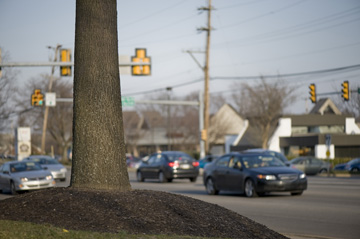
Incorrect technique of telephone pole affect on a tree trunk in a "Mulch Volcano". photo credit: R. Maurer
Types to Avoid
Many bark mulches, playground bark, or bark chips are not composted. According to Ronda Koski and William R. Jacobi of the International Society of Arboriculture (ISA), bark chips are commonly derived from landscape trees that were removed because of poor health and often contain plant pests. Chips derived from pallets and other wood packing materials may harbor indigenous and exotic plant pathogens. Composting breaks down these pathogens, so it is very important to use mulch that has been composted for at least one year. At the Scott Arboretum, we prefer a mixture of composted leaves and composted bark as a mulching material for trees.
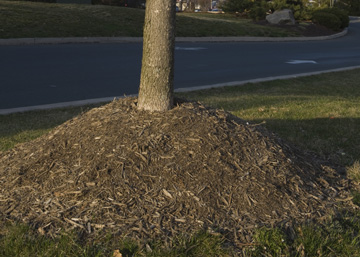
This "Mulch Volcano" is over a foot tall on a tree planted approximately 5 years ago. photo credit: R. Maurer
Technique
While you will not over-apply nutrients by over-applying composted mulch, you can expect other problems. Therefore it is best to apply composted mulch no deeper than 2 to 4 inches extending at least to the canopy drip line (roots actually extend well beyond this point). Do not pile mulch around tree or shrub trunks; the trunk flare and root crown should remain exposed.
“Mulch volcanoes” where mulch is piled up around tree trunks resembling a cone seems to becoming a common site. But this practice promotes many problems.
- Leads to excessive soil moisture and potential root rot
- Causes inner bark tissue to die due to lack of oxygen
- Leads to insect and disease problems due to the specimen being under stress
- Creates a habitat for rodents that chew on the bark and girdle the stem
- Leads to anaerobic conditions that produce alcohols and organic acids toxic to young plants and create imbalances in soil pH
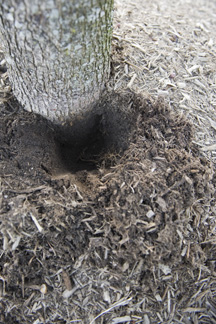
After excavating a "Mulch Volcano" 6+ inches deep, the root flare is still not visible. photo credit: R. Maurer
Mulching deeply around the trunk causes a slow decline and eventual mortality of woody plants. People are wasting money, labor and mulch in the short term and wasting the potential of magnificent specimens in their landscapes in the future.
Links for further information:
Top 10 Myths of Tree Care – ISA (International Society of Arboriculture)
http://www.treesaregood.com/pressrelease/press/top10myths.aspx
Proper Mulching Techniques Key to Healthy Trees – ISA
http://www.treesaregood.com/pressrelease/press/MulchPR.aspx
New Tree Planting – ISA





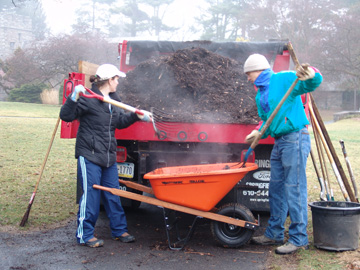
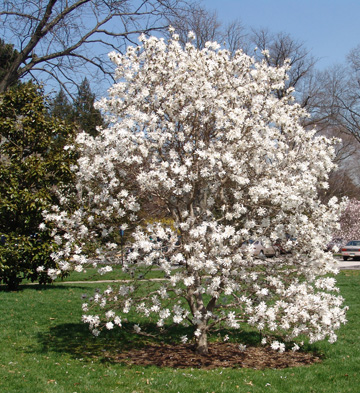
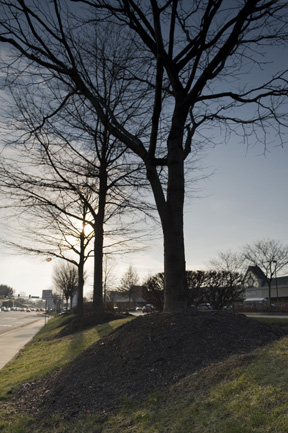
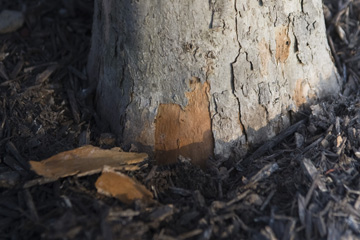
Andrew Bunting
Posted at 15:59h, 23 MarchRhoda,
Great blog. Very informative. Thanks.
Andrew
cindy santa maria
Posted at 12:41h, 27 MarchVery nicely done. I love the examples of which ways to and not to mulch. Thank you!
Rhoda Maurer
Posted at 13:00h, 27 MarchPlease feel free to pass along links to friends, neighbors and others you might feel would benefit from reading this post. The more people are informed, the less “Mulch Volcanoes” and the more healthy trees we will see in the landscape!
Eve Thyrum
Posted at 16:22h, 12 JuneNice job Rhoda. We need to reach out to those uninformed landscrapers — they are the worst offenders and they number many.